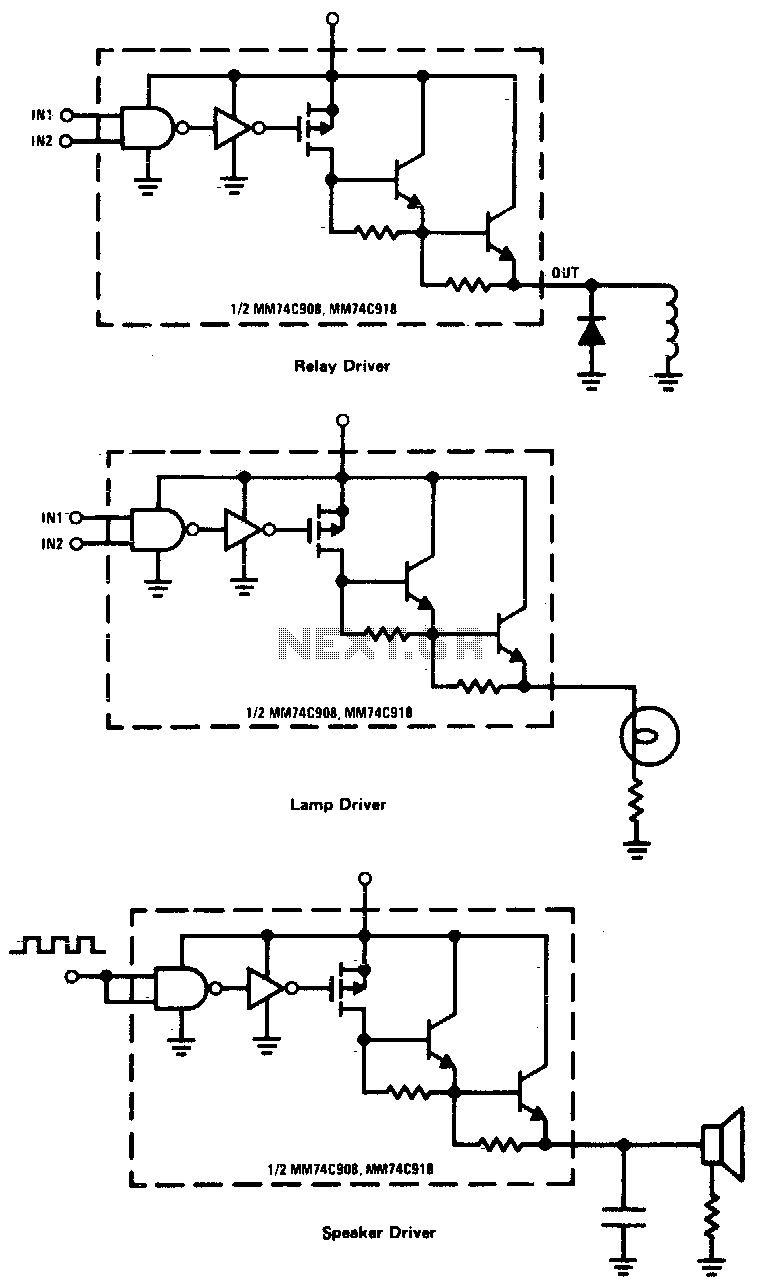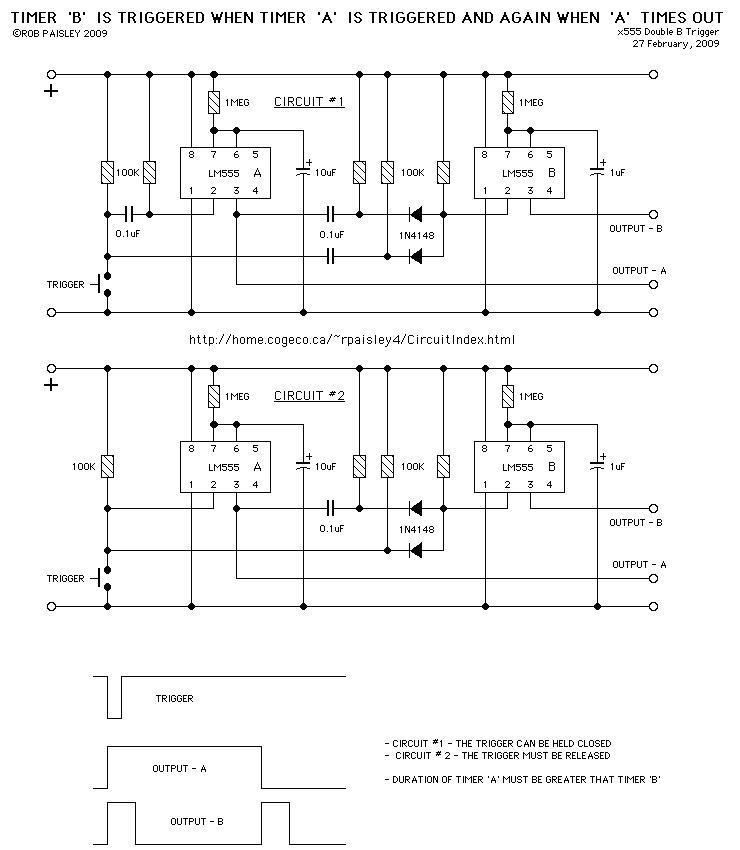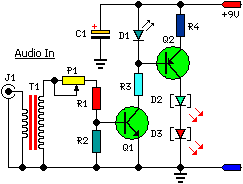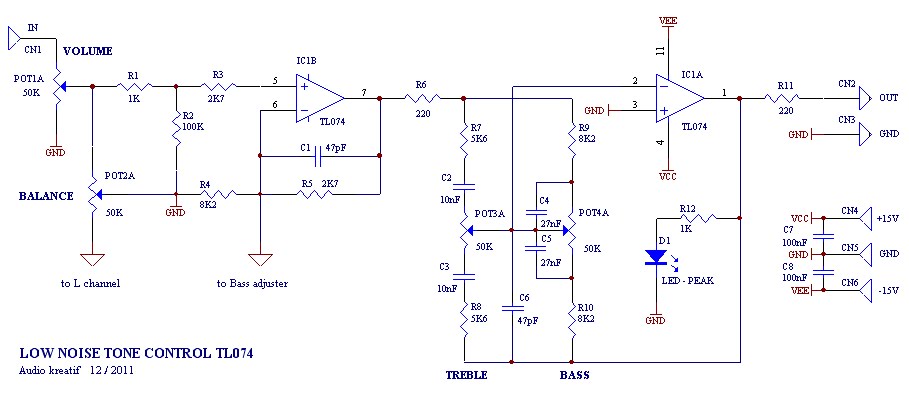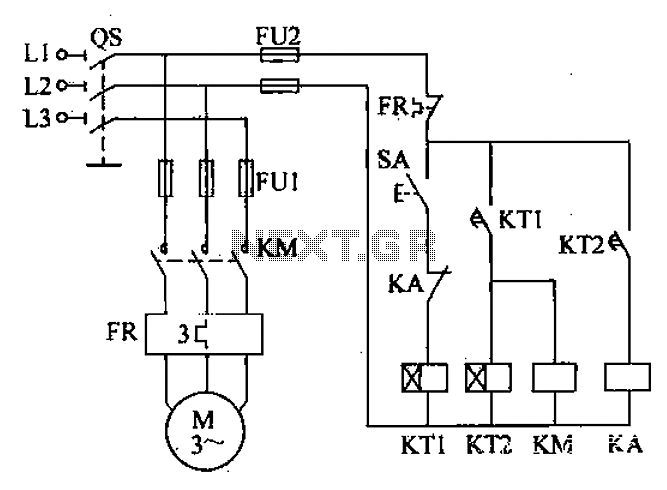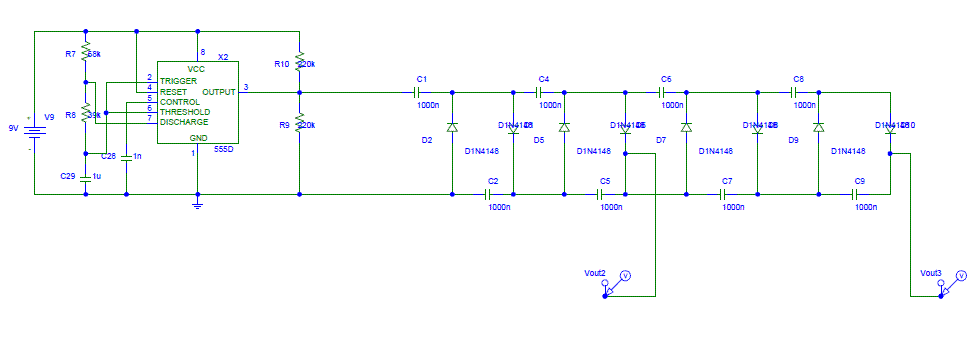
Bass and Treble Controller- Audio Equalizer Circuit
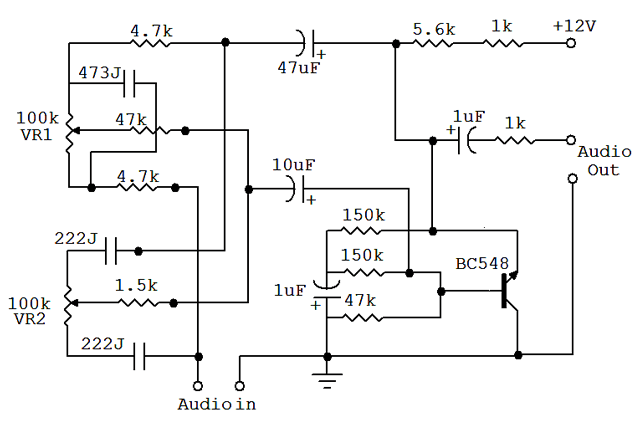
An audio equalizer circuit is utilized to modify the frequency response of an audio signal. This particular equalizer circuit is designed for adjusting the bass and treble (tone) levels of an audio amplifier. To integrate this equalizer circuit with an amplifier, the output of the equalizer must be connected to the input of the amplifier, allowing for control over the bass and treble of the main audio signal prior to amplification. The bass and treble controller circuit features two variable resistors (VR1 and VR2) to adjust the bass and treble levels, respectively, with VR1 dedicated to bass control and VR2 to treble control. This circuit requires a 12V power supply, which is standard in most audio amplifier circuits. Since the equalizer is intended for use with an audio amplifier, no additional power supply is necessary for this equalizer. The audio equalizer circuit is straightforward to construct and offers high-quality performance.
The audio equalizer circuit typically consists of a series of filters that manipulate the audio signal's frequency components. The two variable resistors, VR1 and VR2, are positioned within the circuit to function as adjustable potentiometers. These allow the user to fine-tune the audio output by varying the resistance, which in turn alters the gain of specific frequency bands corresponding to bass and treble.
The circuit may utilize operational amplifiers (op-amps) configured in a non-inverting mode to achieve the desired amplification and frequency response shaping. The design can include passive components such as capacitors and inductors to create low-pass and high-pass filters, effectively defining the cutoff frequencies for bass and treble adjustments.
The choice of a 12V power supply is significant as it aligns with the operational requirements of most audio amplification systems, ensuring compatibility and minimizing the need for additional power sources. The layout of the circuit should be optimized to reduce noise and interference, which can degrade audio quality. Shielding and proper grounding techniques are essential to maintain signal integrity.
In summary, this audio equalizer circuit is an effective tool for enhancing audio playback quality, providing users with the ability to customize their listening experience by adjusting the bass and treble levels according to personal preference. Its simplicity in design, combined with high-quality output, makes it an appealing option for audio enthusiasts and engineers alike.An audio equalizer circuit is used to adjust the frequency response of an audio signal. This is a simple equalizer circuit for controlling the bass and treble (tone) of an audio amplifier. For use this equalizer circuit in amplifier, equalizer`s output should be given in the input of amplifier. So that the main input audio signal`s bass and trebl e could be controllable before the amplify section. As shown here the bass and treble controller circuit has two variable resistor(VR1 & VR2) to control the bass and treble. VR1 for Bass Control and VR2 for Treble Control. This Bass and Treble controller circuit needed a 12Volt power supply. I would have designed it in that way because 12V is used in most of the audio amplifier circuit. and since equalizer circuit is used with audio amplifier, so there no extra power supply will required for this Equalizer.
This audio equalizer circuit is very easy to build and has a very good quality. 🔗 External reference
The audio equalizer circuit typically consists of a series of filters that manipulate the audio signal's frequency components. The two variable resistors, VR1 and VR2, are positioned within the circuit to function as adjustable potentiometers. These allow the user to fine-tune the audio output by varying the resistance, which in turn alters the gain of specific frequency bands corresponding to bass and treble.
The circuit may utilize operational amplifiers (op-amps) configured in a non-inverting mode to achieve the desired amplification and frequency response shaping. The design can include passive components such as capacitors and inductors to create low-pass and high-pass filters, effectively defining the cutoff frequencies for bass and treble adjustments.
The choice of a 12V power supply is significant as it aligns with the operational requirements of most audio amplification systems, ensuring compatibility and minimizing the need for additional power sources. The layout of the circuit should be optimized to reduce noise and interference, which can degrade audio quality. Shielding and proper grounding techniques are essential to maintain signal integrity.
In summary, this audio equalizer circuit is an effective tool for enhancing audio playback quality, providing users with the ability to customize their listening experience by adjusting the bass and treble levels according to personal preference. Its simplicity in design, combined with high-quality output, makes it an appealing option for audio enthusiasts and engineers alike.An audio equalizer circuit is used to adjust the frequency response of an audio signal. This is a simple equalizer circuit for controlling the bass and treble (tone) of an audio amplifier. For use this equalizer circuit in amplifier, equalizer`s output should be given in the input of amplifier. So that the main input audio signal`s bass and trebl e could be controllable before the amplify section. As shown here the bass and treble controller circuit has two variable resistor(VR1 & VR2) to control the bass and treble. VR1 for Bass Control and VR2 for Treble Control. This Bass and Treble controller circuit needed a 12Volt power supply. I would have designed it in that way because 12V is used in most of the audio amplifier circuit. and since equalizer circuit is used with audio amplifier, so there no extra power supply will required for this Equalizer.
This audio equalizer circuit is very easy to build and has a very good quality. 🔗 External reference
Warning: include(partials/cookie-banner.php): Failed to open stream: Permission denied in /var/www/html/nextgr/view-circuit.php on line 713
Warning: include(): Failed opening 'partials/cookie-banner.php' for inclusion (include_path='.:/usr/share/php') in /var/www/html/nextgr/view-circuit.php on line 713
